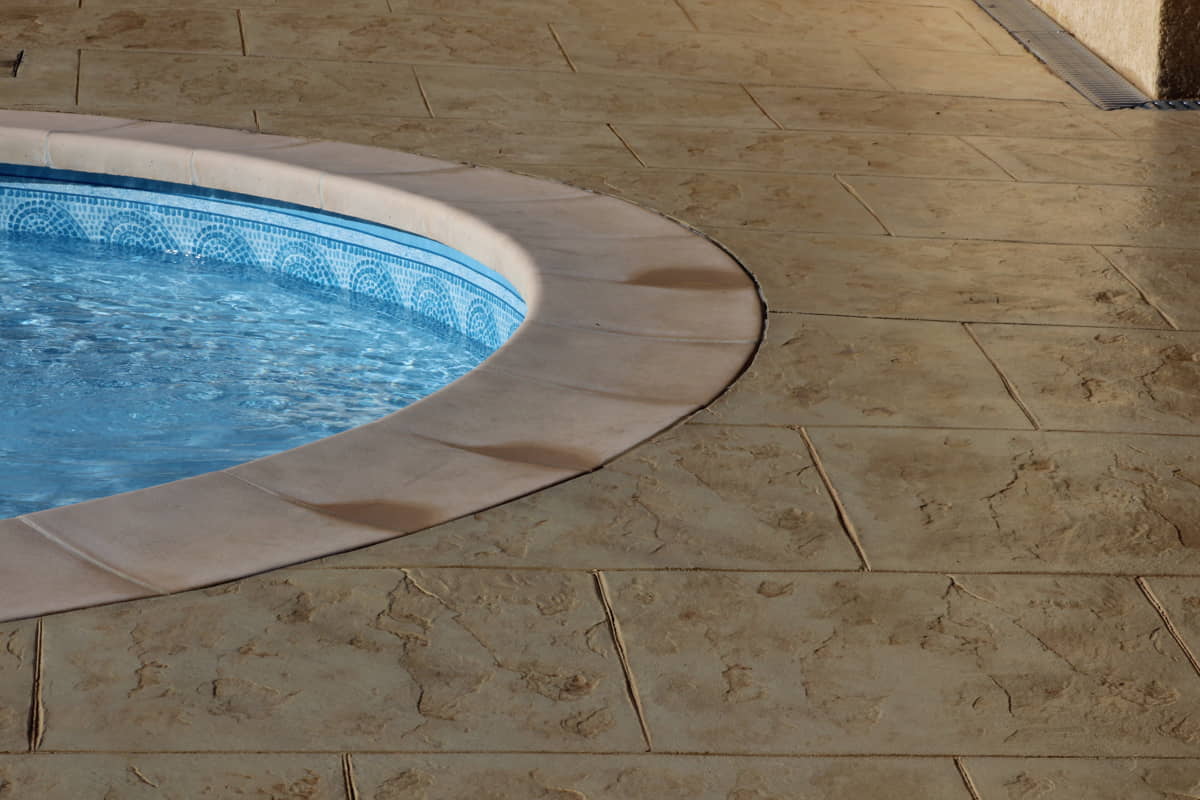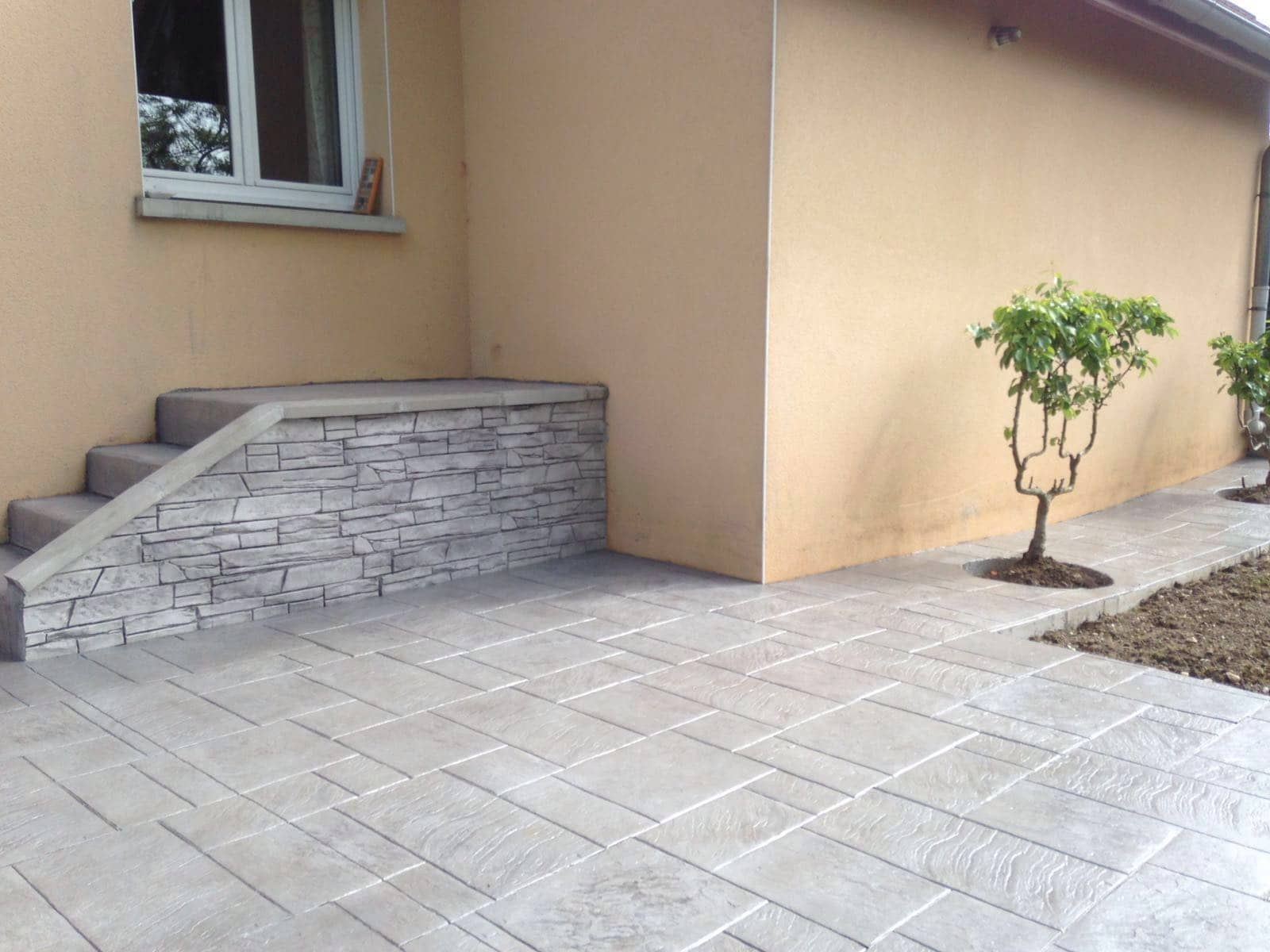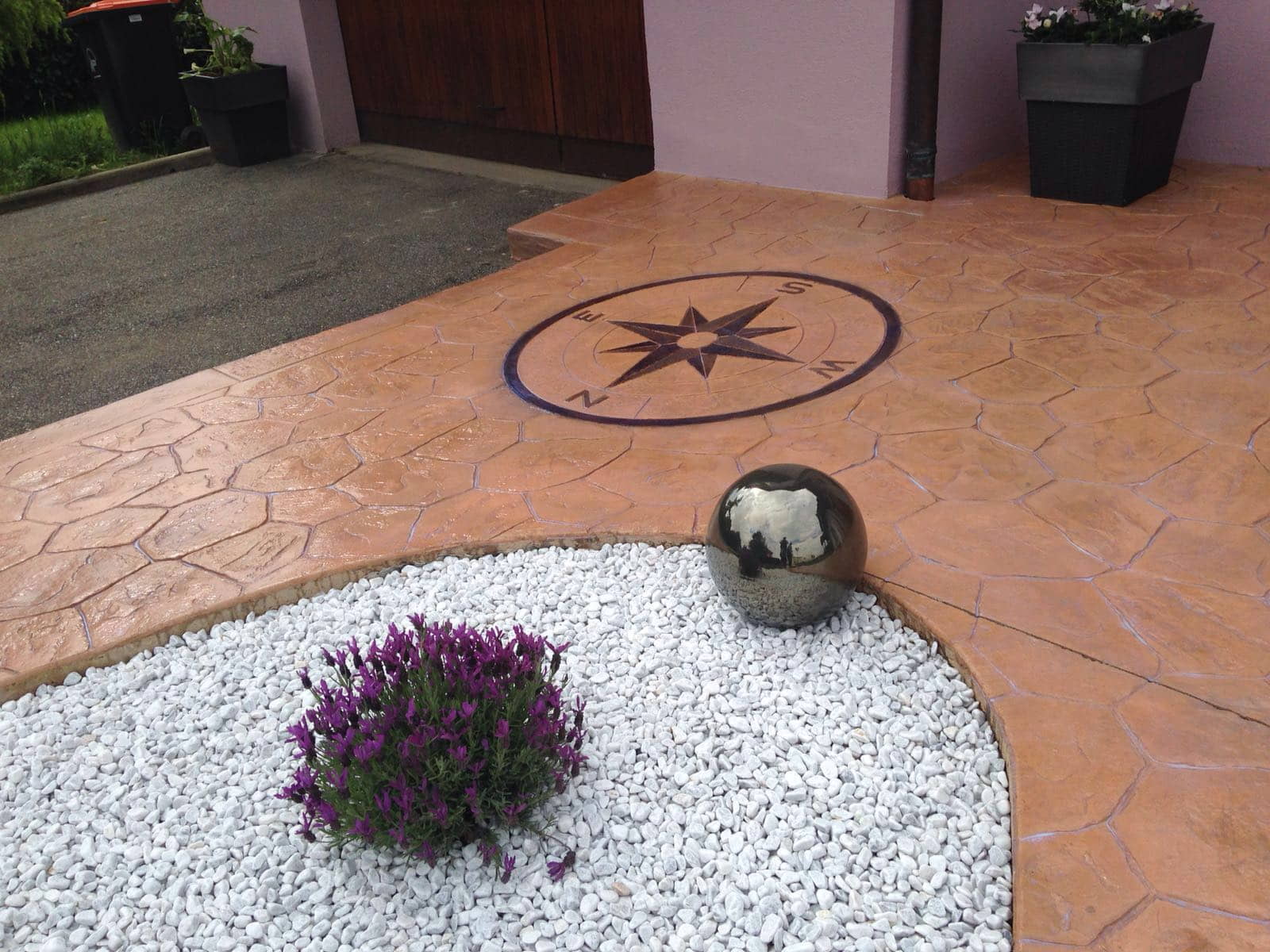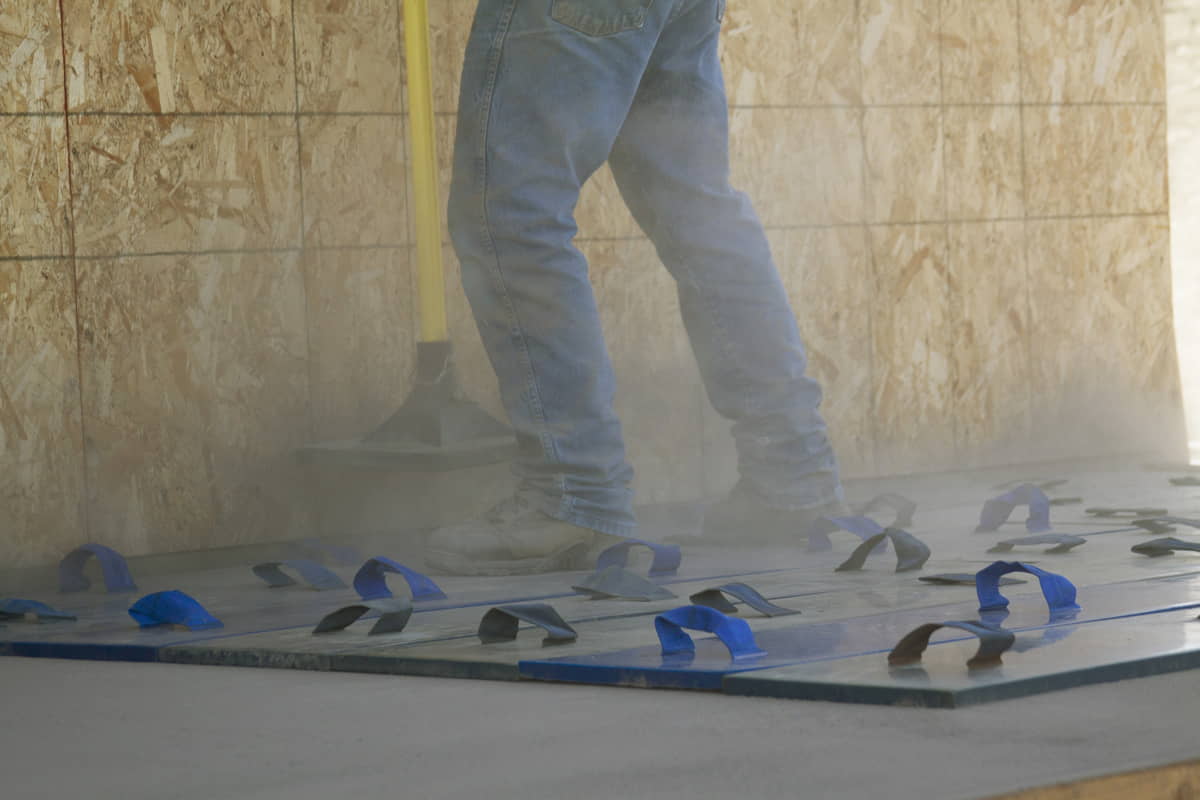Imprinted concrete molds: types, differences and the most chosen ones
The molds of imprinted concretethey are templates that are used to decorate surfaces that are coated with this material in the shape you prefer, as we can choose from a large collection.
These molds adapt perfectly to any type of area. Thus, they can be used both on floors, as well as on walls or facades, so that each one has the desired appearance, regardless of its location.
Due to the resistance of the material and the large number of finishes that can be obtained, thanks to the molds, it is very common to find this compound in public places with high traffic, regardless of whether they are outdoors, as is the case with squares, sidewalks, pools or large terraces.
With these molds, you can reproduce many different types of textures, such as cobblestones, tiles, natural stone, wood, among others, but always counting on a material with very high resistance. The wooden mold is usually very successful because with each print it fills every square inch with elegance and a rustic style that is very authentic.
In short, with imprinted concrete molds, you can replace other conventional materials, to give pavements and walls a different look.

Main features of imprinted concrete molds
Firstly, theimprinted concrete molds they must have a certain thickness so that when applied to the surface and the material, it leaves a correct marking so that the finishes have a long durability.
Secondly, it is very important that their weight is balanced so that professionals can handle the molds with ease and, thus, can achieve the desired appearance on each surface.
Thirdly, it is essential that all the pieces of a design system with imprinted concrete molds fit perfectly, so that the aesthetic coherence of the overall finish is respected.
Fourthly, the handles of the molds must be adjusted to facilitate the work of the professionals and, above all, so that each impression they make is identical to the previous one.
Advantages of using imprinted concrete molds
Next, we are going to detail some of the advantages of using imprinted concrete molds on any surface.
Diversity of designs
These molds represent a great decorative resource for those who want to achieve completely different finishes and textures. In fact, molds can also be made to the buyer's liking for those people who want to reach the highest level of personalization of spaces, decoratively, and constructively speaking.
Minimum execution times
Architecturally, it is always an advantage to use in situ mortars. This significantly reduces execution times. However, depending on the chosen mold, times can vary and increase.
Lower price
Compared to other molds in the construction sector, those of imprinted concrete are much more affordable than more traditional ones, which will reduce the final amount of the budget.
Limits the growth of weeds
Using a material like this, it prevents weeds from making their way and displacing the surface on which the imprinted concrete molds are placed on top. In case of using ceramics, cobblestones and stones, the roots and weeds can grow between the joints and, the water, can displace the pieces.
Few cares for a long useful life
To preserve the imprinted concrete, once applied, no great care is needed. These must be applied when the work is being carried out. Almost exclusively, this only suffers from the wear and tear produced by vehicles passing over it. In this case, it will be enough to apply a layer of sealant. Thus, we have a material with great durability.
Occasional damages
Imprinted concrete is a material that is not, at all, easy to break or shatter. In fact, when it suffers a great impact, the most common thing is that only a mark remains; and for this to stay, it has to be a very strong blow with a blunt object.

The big differences between rigid and flexible molds
As these are molds that are produced with different materials, the great differential factor between both types of molds is, precisely, the rigidity they present, which is going to condition the way to use each one.
This is where the biggest difference lies, with the works carried out with flexible molds being much more bearable. On the other hand, rigid or semi-rigid molds support more weight, and have handles to be able to handle them firmly in a simpler way.
Another big difference is that flexible molds are used in works where space can limit the work itself as these offer greater workability. This type of molds can be bent in small spaces and, although they resist less, they can also be hit. Flexible molds are the most suitable for marking corner gaps, joints between borders and work close to facades.
Types of imprinted concrete molds: total adaptation to taste
The level of customization of a surface depends on the types of existing molds, so that any area can be renovated or created with imprinted concrete. Thus, there are molds for floors, for walls and imitation wood.
Imprinted concrete molds for floors
These are the most used molds for imprinted concrete since pavements are usually the surfaces that are most often renovated using this material. This is because they are surfaces exposed to a lot of traffic and, consequently, to wear.
Our range of floor molds consists of 13 different collections with designs that adapt to any taste. Thus, we have molds in the shape of a fan, cobblestone, brick, stone, roadway, slab, border shapes, circular, with the texture of a blanket, among others. The use of each and every one of these must occur when the material is fresh.
Vertical imprinted concrete molds
In this case, these types of molds are for applying on walls or facades. The size of the molds to apply on these vertical orientation surfaces is usually smaller, not exceeding 80 cm in length.
To decorate any area, we have a line of molds for vertical surfaces where stone, brick or slate finishes always provide a touch of naturalness.
Imitation wood imprinted concrete molds
Imprinted concrete is undoubtedly the best way to replace natural wood. The same wood finish can be achieved in a more sustainable way (avoiding cutting down wood) with our wood imitation imprinted concrete molds. But also faster, cheaper and, above all, creating new shapes that are more durable over time.
With our wood imitation imprinted concrete molds, we not only perfectly imitate the beauty and appearance of wood, but they can also be applied to almost any interior or exterior surface.

The release agent and the imprinted concrete, always united
The release agent, in powder or liquid form, is a basic product when doing a job with molds and imprinted concrete since its function is very important as it will prevent the mold from sticking to the concrete.
You can choose between different shades of release agent color among which we can choose a shade similar to cement or another that evokes other types of effects.
Tips for applying the liquid release agent on the mold
Firstly, to apply Desmocem Liquid, it needs to be sprayed onto the imprinted mold and the surface that is going to be worked on. Next, you need to imprint by applying a bit of pressure and remove the piece that has already been used. Thirdly, we apply the product, with a brush, roller or sprayer. As long as it is done with this last tool, a distance of between 30 and 40 cm of separation must be given. Lastly, the area must be covered forming a homogeneous film in which there are no puddles or very thick layers.
As advice, we will say that to apply this water-insoluble product, the ambient temperature should be between 5ºC and 30ºC and try to ensure that there is not excessive wind. If the temperatures are above 30ºC, there is a risk that the solvent will evaporate. If this happens, the release agent would have to be applied again.
Tips for applying the release powder on the mold
Before applying the mold, the Demoscem® Powder release agent must be sprinkled on the surface. Once we do this, we place the mold to print and apply some pressure. We demold and remove the piece. Once the mold has been removed, we apply the product covering the surface in its entirety, at a distance of between 30 and 40 cm. Once the area is covered, we distribute the release agents so that they spread evenly.
A final warning: it is key that applications of Desmocem® Powder are carried out at temperatures that are between 5 and 30ºC and that the wind does not blow aggressively.
Recommendations for buying imprinted concrete molds
We will start by emphasizing that the order for imprinted concrete must be supervised by the site management, which will also decide the thickness of it when applying it.
Another important issue that can lead to misunderstandings is the composition of imprinted concretes. So, which one to buy? Well, from Topciment we recommend buying imprinted concretes that do not have an excess of additives. Why? Because these, by having too many additives, prevent water from rising by capillarity and make it difficult, to the point of preventing, the grip of the concrete and the mortar.
Let's go with a color tip: on light-colored imprinted concrete floors it is preferable not to apply if there is an excess of water since in addition to shooting up consumption (3-4 kg/ m2), resistances are also lost and the pavement is going to suffer a discoloration when drying.

Price of imprinted concrete molds
As with all materials or accessories in the construction sector, the price of these will depend on many factors and, when it comes to imprinted concrete molds, it could not be otherwise.
Thus, as is natural, in the first instance it will depend on the model you choose and its characteristics. In fact, in the first instance the main variables that intervene in the price of these products are the shapes and their size.
In this way, there are forms like the border that can be more economical but, for example, the rose of the winds mold has a cost much higher than that of the border or other models.
As we mentioned in the previous paragraph, the size of the molds can be definitive in their price, with the larger ones being the most expensive products.
In all this, to say, that the price range in which the imprinted concrete molds move is as wide as its catalog of options. Thus, having so many references is not surprising, and we can say that the cost ranges from 30 euros to less than 200, approximately.
This makes imprinted concrete molds a great option, both constructive and decorative, for any space, regardless of whether it is indoor or outdoor, since in our catalog you can find countless shapes, exactly, 100.
Subscribe to our newsletter
Receive in your email tips for the application and care of microcement, the latest trends and news from Topciment products.




